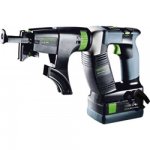AlexThePalex
Member
- Joined
- Nov 12, 2008
- Messages
- 7,808
What's the difference between DWC 18-2500 and DWC 18-4500?
[attachimg=1]
Well, I know about the RPM, one is 2500 and the other is 4500, but what I need to know is, what application they would be suited best. Which one suits my application best.
Since last week I am the project manager of a project where we turn a former commercial space into 5 appartments for rent, and all the divisions will be made with metalstuds, OSB board, and drywall. I have 6 guys directly under my supervision and 5 more on a neighbouring project that manage themselves but rely on my logistical support.
We have many meters of wall to do and right now we only have one guy with one DeWalt screwgun installing all the drywall. First we put up the metalstuds, fill them with insulation, then a layer of 12 mm OSB board for rigidity, and finally a layer of 12 mm drywall that will be sprayed with latex wall paint.
The 6 guys worked for 3 weeks by themselves, hoping they would manage themselves just like the other group did succesfully, but it didn't work out, it all went chaotically and very slow. So I was brought in to organise the lot and speed up the process. I will also will join them myself, 10 hours a day for 6 days per week.
So I am thinking we need an extra drywall gun so we can have two people installing drywall and OSB. Naturally I thought about the Festool DWC since I am already on the battery platform and we might only need a basic version. I will be using my 15 volt batteries instead of 18, but I don't think I'll lose too much RPM's there. Or maybe I am wrong?
Turns out there are two versions of the DWC, so I wonder why, and what would be best for my situation. I never used one before, so any advice is appreciated. Thanks.
[attachimg=1]
Well, I know about the RPM, one is 2500 and the other is 4500, but what I need to know is, what application they would be suited best. Which one suits my application best.
Since last week I am the project manager of a project where we turn a former commercial space into 5 appartments for rent, and all the divisions will be made with metalstuds, OSB board, and drywall. I have 6 guys directly under my supervision and 5 more on a neighbouring project that manage themselves but rely on my logistical support.
We have many meters of wall to do and right now we only have one guy with one DeWalt screwgun installing all the drywall. First we put up the metalstuds, fill them with insulation, then a layer of 12 mm OSB board for rigidity, and finally a layer of 12 mm drywall that will be sprayed with latex wall paint.
The 6 guys worked for 3 weeks by themselves, hoping they would manage themselves just like the other group did succesfully, but it didn't work out, it all went chaotically and very slow. So I was brought in to organise the lot and speed up the process. I will also will join them myself, 10 hours a day for 6 days per week.
So I am thinking we need an extra drywall gun so we can have two people installing drywall and OSB. Naturally I thought about the Festool DWC since I am already on the battery platform and we might only need a basic version. I will be using my 15 volt batteries instead of 18, but I don't think I'll lose too much RPM's there. Or maybe I am wrong?
Turns out there are two versions of the DWC, so I wonder why, and what would be best for my situation. I never used one before, so any advice is appreciated. Thanks.


